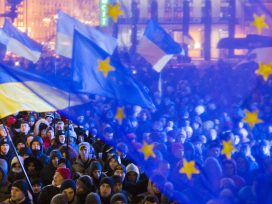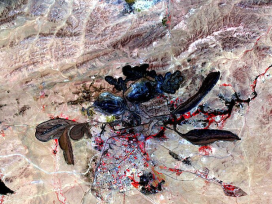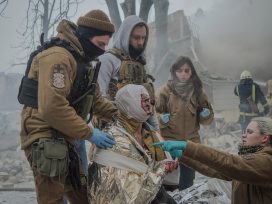Something happens, somewhere
Tracing responsibility for honeybee losses in rural Ukraine points to farmers and pesticide-treated rapeseed fields. But whose practices really lie behind the short-term bid to increase crop productivity? And what do the historic uses of agrochemicals tell us about their current weaponization?
A non-event, a continuity: growing rapeseed in Ukraine. For the most part, it’s an unsensational succession of seasonal repetitions: hybridized seeds are sown late summer into nitrogen-treated soil; phosphorus fertilizer is added in autumn to strengthen roots; the plants mature in spring, absorbing another dose of nitrogen; four-petalled yellow flowers, blooming late spring into summer, are sprayed with insecticide; once the plant has dried out and the seeds have darkened, the crop is harvested – shortly before the growing season restarts. The war has disrupted some of this, but farming rapeseed in Ukraine is on the rise again. The agricultural cycle rolls on, creeping slowly earlier into the year due to climate change.
Amidst the seemingly monotonous rapeseed production process, incidents happen. In early May 2024, a disconcerting story emerged: in the recently liberated northern-Ukrainian Chernihiv Oblast, beekeeper Serhii Reutskyi reported a ‘plague on bees’: ‘I went to close the bee hives. But there were piles of bees at the bottom and in front of the hives.’1 Reutskyi’s bees died in the village of Nekhaivka, the morning after nearby farmers had sprayed their rapeseed fields with insecticide, he points out. He called other nearby beekeepers who confirmed the death of their colonies too. Although the story doesn’t discuss the crop other than in passing, I am suspicious that the rapeseed fields constitute evidence. Is the blurred, yellow background, an essential clue or a false lead for locating responsibility behind the loss of life and damage brought to people involved?
What counts of crime and who is counting?
Documenting war damage has been a major focus for journalists, human and environmental rights activists, researchers and the government of Ukraine itself since the beginning of Russia’s full-scale invasion in 2022. This makes perfect sense. When it’s all over, evidence will be vital for trials, as holding someone accountable requires proof of harm. This is being gathered. But exonerating evidence is also being gathered. Defendants will be innocent until proven guilty, even though we know, they know, we know that they know, they know that we know, everyone knows – but this won’t matter to the prosecutor. The defendant may or may not transform into the accused. Proof may be exchanged for a guilty verdict, followed by a sentence, followed by reparations. None are necessarily equivalent to restoring justice per se, but it’s the best we’ve got.
Acts of war are events – events that we’ve come to understand as criminal, at least on the Ukrainian side of the border. The need for evidence-gathering has become indisputable. But when it comes to tracing agroecological damage, things are more complicated. With war, harm is the point – or maybe victory (whatever that means) – inflicting damage, a tactic to achieve the goal. With monoculture, in which rapeseed is complicit, any associated harm is merely a ‘by-product’, an ‘unintended consequence’ of producing trade commodities sold at international markets, something to be dealt with via administrative law, if it comes to it.
The aftermath, here and elsewhere
The news article about the bees and their keeper is not an investigation. If anything, it’s an incident report, an essential piece of data for those trying to understand casualties in the world of monoculture. And yet it does narrate blame and responsibility. For the most part, it identifies the main actors at a local level: the beekeepers, the agronomists employed at rapeseed fields, the anonymous ‘them’, who Reutskyi says ‘won’t be found guilty’.
Another article, commenting on the incident for the agricultural portal Kurkul, states: ‘The season of spraying rapeseed crops with insecticides has begun, and, accordingly, the season of poisoning bees with them.’ ‘Accordingly’ is doing a lot of work in the statement. Mass bee deaths appear to be the next logical event in the process of securing crop yield.
Reutskyi, citing ‘information from the Internet’, notes that Biscaya 240 OD, sprayed the previous night, ‘shouldn’t cause such mass bee deaths’. The beekeeper may have picked this up from Superagronom, an agricultural information portal, that states, ‘Biscaya is nontoxic to bees and bumblebees’. But this is false information – an accidental or deliberate ‘mistake’, obscuring cause and effect.
The way we understand causality of harm and tell stories of toxicity matter for our ability to hold a guilty party accountable and achieve at least some form of reconciliation. Yet the reporting focuses on the ‘facts’, whether true or false, as said, without providing further context. The active ingredient is ‘missing’ from both the product description and the news reports despite being the substance that does the ‘work’ of killing insects and obstructing the media.
Thiacloprid, an odourless, yellowish, crystalline liquid, is the lethal core of Biscaya 240 OD. Perhaps, understandably, Reutskyi didn’t have the time to interrogate the accuracy of the statement that this product is non-toxic to bees. Just a click away from the website he cites would have brought him here: ‘Chemicals containing the active ingredient thiacloprid are considered a level 3 hazard for bees’. Although the website provides no reference to which classification it uses, the statement matches Ukraine’s State sanitary rules and hygienic norms ‘Hygienic classification of pesticides according to hazard level’, placing Biscaya 240 OD into the category of ‘moderately dangerous’ for pollinators. Recent research by a state agency in Ukraine found that half of over 80 cases of mass bee deaths they investigated involved pesticides. Bees are seen as ‘non-target species’ in agrochemical jargon, but thiacloprid doesn’t know it wasn’t intended to harm bees, and so it doesn’t discern.
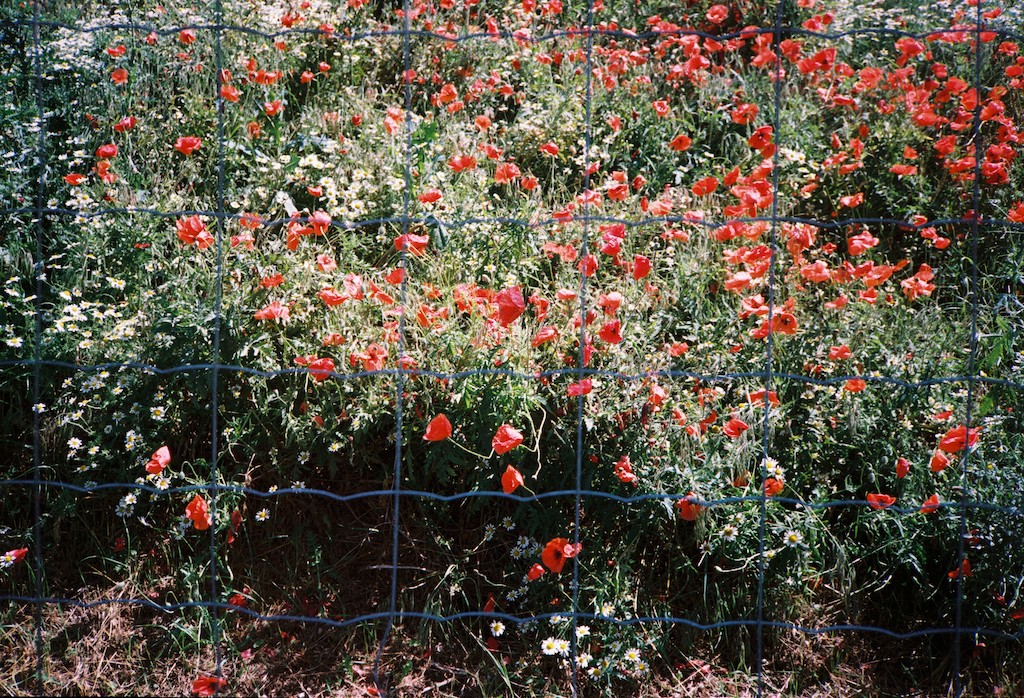
Wildflower border to rapeseed field. Image from ‘A Field from Afar’ by Iryna Zamuruieva
Insecticide of this kind is pernicious beyond causing mass bee deaths. It can stay in the ground long after its application, altering organisms living in the soil and accumulating in the bodies of plants that grow on the margins of arable fields. These in turn will pass on the toxicity they absorb to birds, rodents and other animals. It is also highly toxic to aquatic life. And once in water, neonicotinoids can further mutate to form chemicals that are a hundred times more toxic than the original. Biscaya 240 OD is dangerous for us humans too. The manufacturer’s safety data sheet admits it is suspected of causing cancer, may damage fertility and the unborn child. But this toxicity – that does, may, will damage – is insufficient to stop its use. Someone’s death or deteriorating health is the ‘non-target damage’ in the name of greater yield.
Spray to yield
Reutskyi is not alone in living and working near rapeseed fields. The largely export crop’s presence has been steadily growing for the past 20 years in Ukraine. In 2022, despite the beginning of the full-scale invasion, Ukraine sold 3.5 million tons worth US$1.55 billion, making it the world’s third-largest rapeseed exporter. In 2023, the largest area to date was sown with rapeseed: 1.4 million hectares, and nearly all of it (94% of the total area) was covered with 1.8 mln kg of pesticides, insecticides and herbicides. The scale is no surprise. Large monoculture production is entirely reliant on the intensive use of pesticides and fertilizers to maintain record yields and profits – regardless of war and climate change. According to Ukraine’s State Register of Pesticides and Agrochemicals, of the 3,500 varieties of insecticides, fungicides and herbicides, more than 700 are used on rapeseed. Thiacloprid is in the top 16 of the most heavily applied, alongside four other chemicals illegal in the EU.2 Geographer Annie Shattuck reminds us that pesticides became essential ‘not for producing enough food to feed the population, but for the survival of a particular form of political economy’.
Biscaya 240 OD is also not unique. As a neonicotinoid, it belongs to a group of synthetic, neuro-active chemicals, developed by Shell and Bayer in the 1980s, proven to be toxic to pollinators. It may be common knowledge in the EU, but despite their widespread usage and high toxicity, neonicotinoids have received very little attention outside of specialized media in Ukraine. The effect of neonicotinoids on bees is akin to nicotine’s effect on humans, albeit more acute. ‘Neuro-active’ means their way of killing is cruel, causing death through paralysis of the nervous system. Nearly 50 years after their invention, neonicotinoids have become the most widely used group of insecticides globally, despite prolific evidence of their harm to soil life, insects, birds and mammals living in and around the fields where it is applied.
If Ukraine was part of the EU, the incident with bee deaths reported in Nekhaivka would breach the law, not in just one but three ways: aerial spraying of pesticides; spraying pesticides in close proximity to residential areas; and using banned pesticides. But Ukraine isn’t part of the EU. Of the 87 pesticides banned for use in agriculture in Ukraine, there seems to be only one neonicotinoid. Many others are being freely disseminated in legal and illegal circulation above and below ground. And, in the glaring absence of serious environmental regulations and weak enforcement of those that do exist, parts of the country’s land, which isn’t occupied or under attack from the north, south and east by Russia, are offered in service of a less discernible expansion of the West’s capital and that of domestic agro-oligarchs, who dominate industrial, agrochemical-reliant, export-oriented monocrop farming, such as rapeseed.
Within the EU’s borders, the story of neonicotinoid use is only marginally less tragic. In 2018 they were banned in all member states, following pressure from environmental groups and civil society. Yet legislative workarounds make neonicotinoid use possible despite the ban. Authorization can be given for the use of neonicotinoids in ‘emergency situations’. But what counts as an ‘emergency’ is not specified. Two years after the law took effect, 67 emergency authorizations were issued. Some pesticide concessions for rapeseed production were cleared without any justification other than the crop’s significance to the country’s economy.
In Ukraine, since Biscaya 240 OD is legal and its usage makes perfect economic sense, farmers don’t even need to apply for authorization. They simply spray it, and if they’re courteous enough, let the neighbouring beekeepers know in advance.
The state, the civic, the capital, the criminal
I think again of what holding those causing harm through agri-logistics responsible would require and how different it is, really, from responsibility for any other kind of harm. I wonder if we might start with looking at those who make toxic agrochemical production and distribution possible – a complex and ever-changing constellation of state-private-criminal networks.
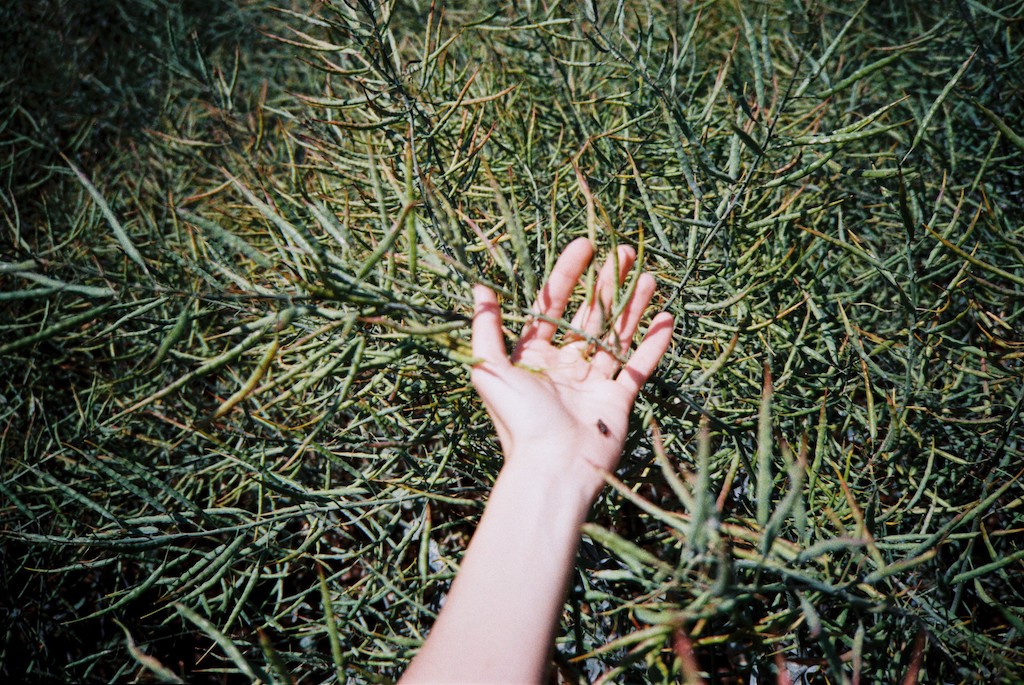
Rapeseed field. Image from ‘A Field from Afar’ by Iryna Zamuruieva
People who love bees celebrated what they considered was the end of neonicotinoid use within EU member states – reportedly a story of responsibility, assumed, finally, by institutions. ‘Banning these toxic pesticides is a beacon of hope for bees’, said a spokesperson from Avaaz, a campaign advocating the ban. Although well intentioned, the campaign’s tactic comes from a naive imaginary of a world in which the state has total control, where the legal prohibition to use something will end toxic practices. The state of course still plays a role via regulations, policy and licensing, determining acceptable degrees of toxicity to various bodies – and allowing, or not, to push the degradation elsewhere, both in place and time.
Rather than eliminating harm, the ban has relocated the problem, creating new toxicity movement routes, reshuffling the constellation of producers, distributors, traders, blurring the lines of responsibility within agro-supply chains. An investigation by Unearthed and Public Eye revealed that the EU – led by France, Belgium, the Netherlands, Hungary, Germany and Spain – exports more than 10,000 tonnes of neonicotinoids to poorer countries, with Brazil as its top destination. The Union remains the largest supplier of insecticides to Ukraine, including those it has banned internally. As of 2022 just over 50% of all pesticides in Ukraine came from the EU and 35% from China. A large amount of pesticides banned in the EU is regularly found in traces of imported food and industrial crops, both before and during the full-scale invasion – Fortress Europe’s walls leaking in the harm it attempted to export elsewhere. Toxicity is an ouroboros; ‘none of us are free until all of us are free’ is more than a political slogan – it’s a fact.
Reutskyi mentions that the agronomist from one of the fields was open to speaking to him and readily shared information about their use of Biscaya 240 OD. However, employees of the other nearby agricultural enterprise, who were reportedly preparing to apply Acetochlor (another chemical banned in the EU) and Glyphosate, refused to show him the canisters or provide any information on the active substances. His concern, shared by environmental groups and organic farmers, is that the application of many pesticides in Ukraine contravenes manufacturer safety guidelines: namely, exceeding the recommended dose and frequency of application, resulting in more pollution remaining in the soil and water for years to come.
Whilst we are yet to see if the EU’s forthcoming Corporate Sustainability Due Diligence Directive will limit the harm proliferating across agricultural supply chains, groups like the Argentinian Beekeeper Society make it clear that selling toxic chemicals in itself is ‘an act of aggression, of ecocide, and a violation of human rights’. Under the capital-driven agricultural production model, it will never suffice to simply ban pesticide use. Localized restrictions create superficial success stories for privileged people and bees. As long as producers make and sell toxicity, capital-creating loopholes will keep enabling profit at the cost of ‘non-target’ lives and liveliness elsewhere.
Another key player in the pesticide-spread constellation is Bayer, one of the largest EU neonicotinoid producers and its main exporter. It may have been local farm employees, who sprayed the Biscaya 240 OD in nearby rapeseed fields, but it is Bayer who sold it. The thiacloprid-based product sits in row 1,815 of the State Agrochemical Register, neatly in between other Bayer-produced pesticides, class 2 hazardous overall – in other words, dangerous. However, when I search for neonicotinoids in the masses of excel data from the Ukrainian state register, it renders no results. Understanding toxicity requires an understanding of specificity: the kinds of active ingredients that belong to the toxic neonicotinoid family, in this case. The opaqueness of tracing toxicity adds to the problem: clues scattered across various spreadsheets, statistical publications and industry reports do not lend themselves well to easily discerning what is hazardous from what is safe.
In its 2024 neonicotinoid report, a master work of performative, at most restrained repentance, Bayer concedes to ‘a few reports of incidents where the use of neonicotinoid products was associated with negative effects on non-target insects’, meaning honeybees. It goes on to suggest solutions: innovation, labelling, training for the farmers in poor countries on how to use deadly chemicals safely. This is nothing new. In 2008, ten years before the EU ban, when clothianidin, another Bayer-produced neonicotinoid, was found to have caused mass bee deaths in Baden-Württemberg, Germany, the agrochemical giant ‘blamed the seed companies that had processed Poncho Pro’, stating that ‘clothianidin is safe for bees, the environment, users and consumers “if used properly”.’3 But ‘Poncho, suggestive in name of a protective blanket for both farmer and crop,’ writes Sarah Waring, ‘was revealing itself to be more of a poisonous drape’: loose dust from pesticide-coated corn seed had dispersed on sowing over nearby rapeseed fields and wildflowers, affecting 12,174 colonies.4 Bayer’s solution on this occasion included ‘a swift, out-of-court settlement of €2.25 million to local beekeepers.’5 The lack of another solution – namely, phasing out neonicotinoid production entirely – is astonishing yet unsurprising in both cases. Harm to life is merely collateral damage.
Bayer is practised in weaponizing air to kill. During World War II, Degesch – a subsidiary of the IG Farben conglomerate that Bayer was bought into – was a major supplier of Zyklon B. This hydrogen cyanide-based gas was used in the gas chambers of Nazi concentration camps in Germany and Poland to murder over one million people during the Holocaust. The company’s business strategy relied on testing drugs on people, who were imprisoned and used as forced labour, in camps like Auschwitz, where the gas was later applied. It takes the bodies of others, elsewhere, to produce toxicity and turn mass murder into a profitable venture.
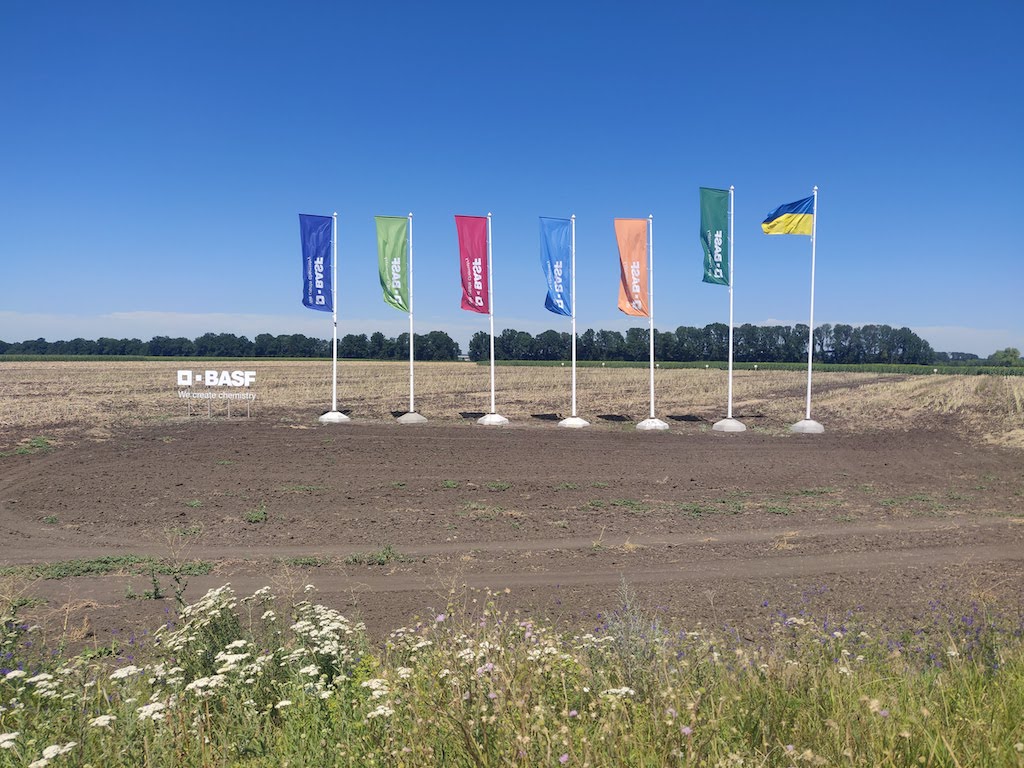
BASF, Kirovohrad Oblast, Ukraine, July 2024. Image by Iryna Zamuruieva
Although disproportionate, some accountability followed: IG Farben’s senior managers received prison sentences of up to eight years. Some, such as Otto Ambros, head of the chemical warfare committee at the war ministry, were acquitted. Released after serving only a few years, Ambros continued his career advising within the agrochemical industry and politics – all the while remaining a convicted Nazi war criminal guilty of crimes against humanity. Imagining both accountability for Russia’s ongoing war crimes in Ukraine and large-scale agriculture’s long-term exhaustion of the soil in this light looks if not entirely hopeless, then bleak. What’s more, the knowledge of chemical use for military purposes lends itself well to agricultural and political ends: the knowledge accumulated within chemical company production was readily applied within the growing post-WWII agricultural industry. BASF, for example, a company that divested itself from IG Farben conglomerate following the Nuremberg trials became one world’s largest chemicals producers, sales amounting to €68.9 billion in 2023.
Clandestine technology
The spread of toxic agrochemicals goes further than the visible, seemingly legitimate procedures administered by state and private entities. Beyond accounted for and legally sold pesticides, no matter how toxic in themselves, counterfeit pesticides, distributed through organized clandestine networks both within Ukraine and internationally, are even more perilous. The flow of this forged toxicity has all-too-real effects, as outlined in the 2020 OECD report: a Russian intermediary company orders chemicals used in the production of pesticides from China; the chemicals are then shipped to Slovenia and driven by truck into Ukraine; there, pesticides are manufactured, labelled and packaged for distribution across the EU.
Both the original and counterfeit pesticides share one challenge: when unused, they have nowhere to go. There are no pesticide destruction facilities in Ukraine and the majority of warehouses storing highly toxic pesticides are located in the active war zones in southern and eastern Ukraine – some of which have already been deliberately targeted by Russia. Recent reports show that Russia has destroyed at least 1,433 industrial and infrastructure facilities since February 2022. When Russia hits agriculture storage facilities, not only grain and other food produce might be destroyed but toxic chemicals too. Pesticides and fertilizers spill into the environment; Russia’s long distance precision missiles are turning Ukraine’s agricultural storage facilities into chemical weapons.
If we learn to see pesticides as a destructive technology of the monoculture industry, we might also see that, as with any other technology designed to impact harm, it could never have been contained solely within its original purpose, mutating across fields of application. In analysing technology in relation to how pollution spreads, Ukrainian cyberwar and infrastructure scholar Svitlana Matviyenko writes that the Russian colonial project ‘wields pollution as a weapon of war’. Indeed, technology, understood as means to conquer, be it on the battlefield or agricultural field, shapeshifts the production of different kinds of violence: synthetic chemicals developed for warfare to achieve aims on the battlefield, making their way to serve as synthetic productivity enhancers on the agriculture field and back to uncanny war technology. The feral, non-linear, deliberate and incidental, unpredictable, opaque and quiet harms, here and there, are leaking all around.
P.S.: mono, poly, legal, moral
Intent to do harm matters within the law – at least in the Western Christianity-based legal system, which has a peculiar perspective on sin, shame, repentance and indulgence. I am less sure how much the supposedly unintentional act of killing bees would have mattered to Reutskyi. But what is at stake here is no legal matter alone. In fact, there’s an unfortunate but very real possibility that spraying Biscaya 240 OD over the field of rapeseed in Nekhaivka was a completely legal act. What is legal and what is moral, however, are not always the same thing. And what journalists, researchers and campaigners omit from or include in the story can either obscure toxicity further into unaccountability or render it visible.
Monoculture tends to come with mono(polized) profits and a mono-narrative of its essential role. But what of poly-damage all around? This requires telling more complex stories, as it is not only the consequences of war that will determine the health of environments and people in them but also every decision made on land currently designated for agriculture. Land has never been a rural issue alone, after all.
This article was written during a fellowship at the Institute for Human Sciences (IWM). The author would like to thank Angelika Adensamer and Nicole Buxeda for their advice on legal matters, and Sarah Waring for her thoughtful editing and invaluable bee expertise.
Translated from Ukrainian by the author.
According to the EU Pesticides Database and State Statistic Service of Ukraine, these are chlorpyrifos, carbendazim, dimethoate and diquat.
R. Schmuck, ‘Bayer CropScience: Der Wirkstoff Clothianidin ist bei Sachgerechter Anwendung sicher für Bienen (Active compound clothianidin is safe for bees when properly applied)’, Karlsruhe, 20 June 2008, in S. Waring, Farming for the Landless: New perspectives on the cultivation of our honeybee, Platin Press, 2015, p. 60.
S. Waring, Farming for the Landless: New perspectives on the cultivation of our honeybee, p. 63.
Baden-Württemberg Ministerium für Ernährung und Ländlichen Raum (Baden-Württemberg Ministry of Food and Rural Areas), ‘Abschlussbericht Beizung und Bienenschäden’ (Final report: Seed dressing and bee losses), Stuttgart, 17 December 2008, p. 6, in S. Waring, Farming for the Landless: New perspectives on the cultivation of our honeybee, p.60.
Published 15 July 2024
Original in English
First published by Eurozine
Contributed by Institute for Human Sciences (IWM) © Iryna Zamuruieva / Institute for Human Sciences (IWM) / Eurozine
PDF/PRINTIn collaboration with
In focal points
Newsletter
Subscribe to know what’s worth thinking about.
Related Articles
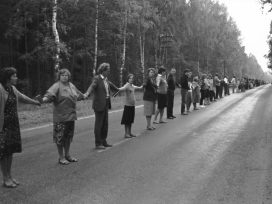
The fall of the Berlin Wall, and not the human chain across the Baltics, is emblematic of 1989. But what if this show of unity had become iconic of communism’s disintegration? Could acknowledging Eastern Europe’s liberation positively reframe what Russia otherwise perceives as loss since the Soviet Union’s demise?
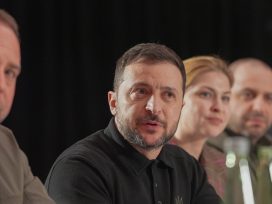
The ‘Trump–Putin deal’ again places Ukrainians in a subaltern role. The leaked contract with its fantasy $500 billion ‘payback’ has been compared to Versailles, but the US betrayal recalls nothing so much as Molotov–Ribbentrop.

